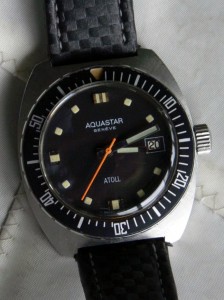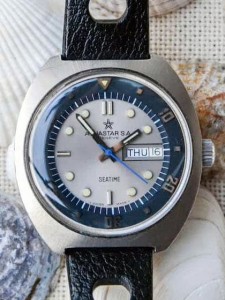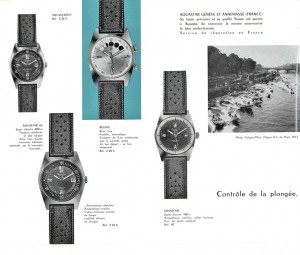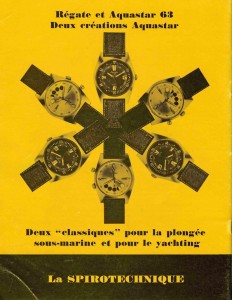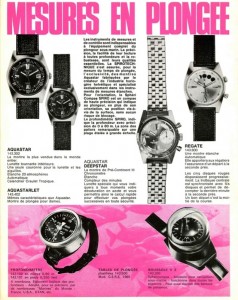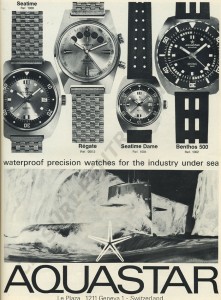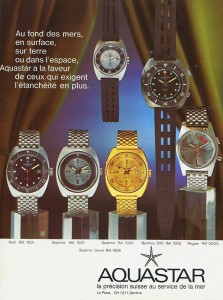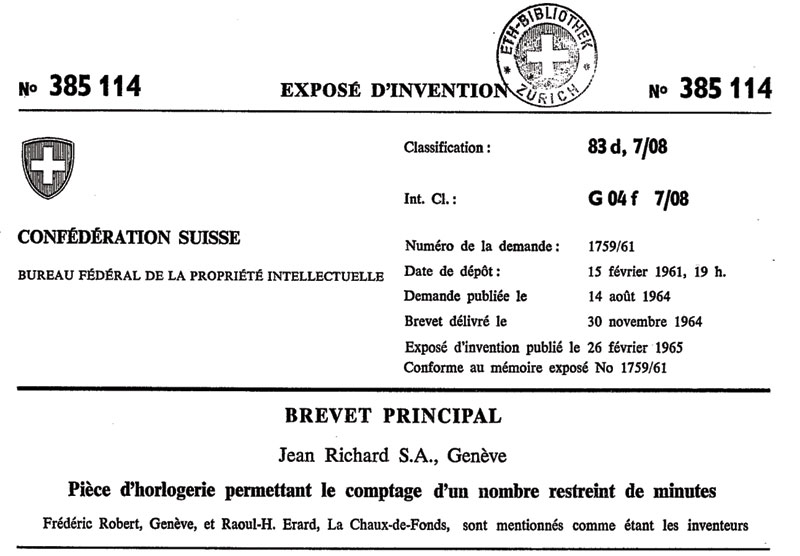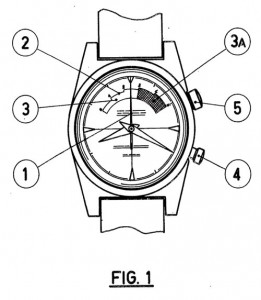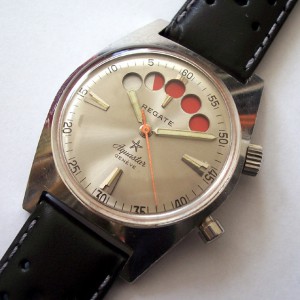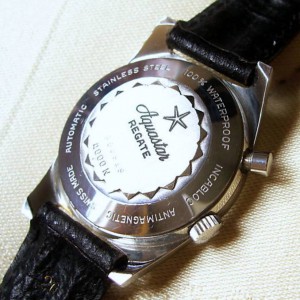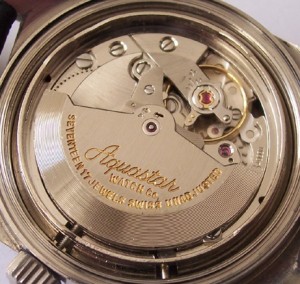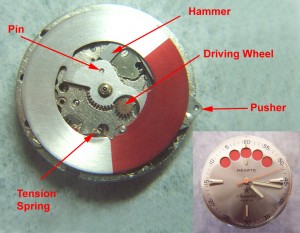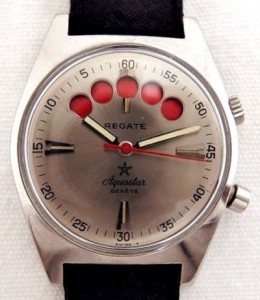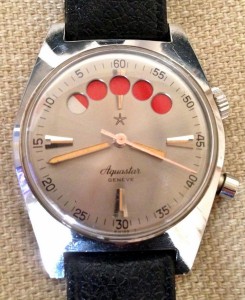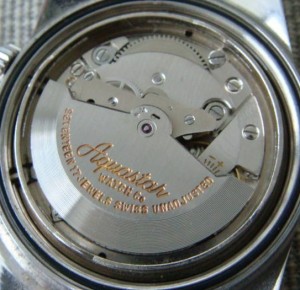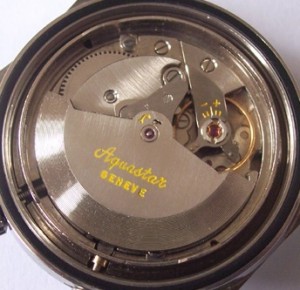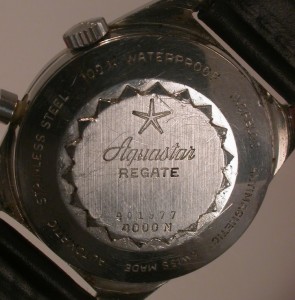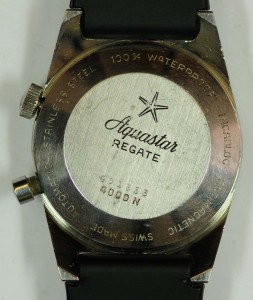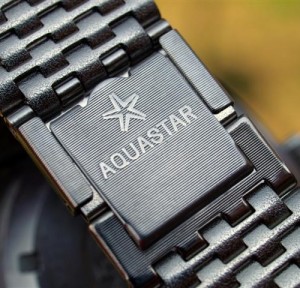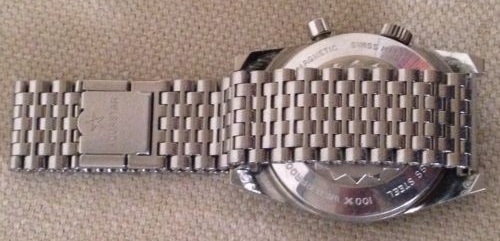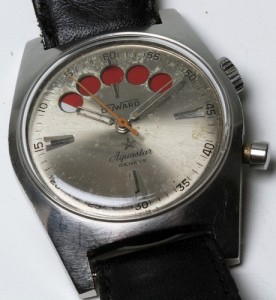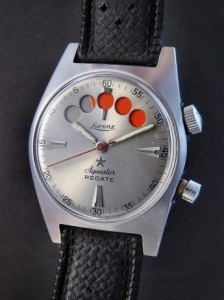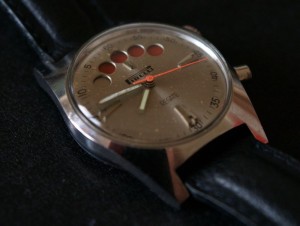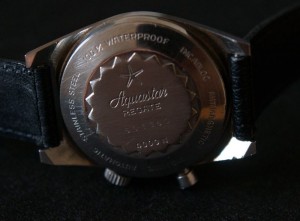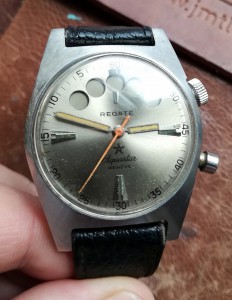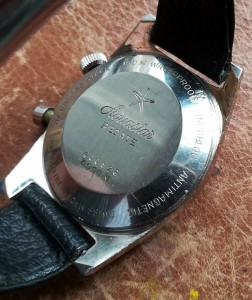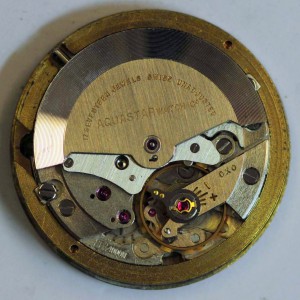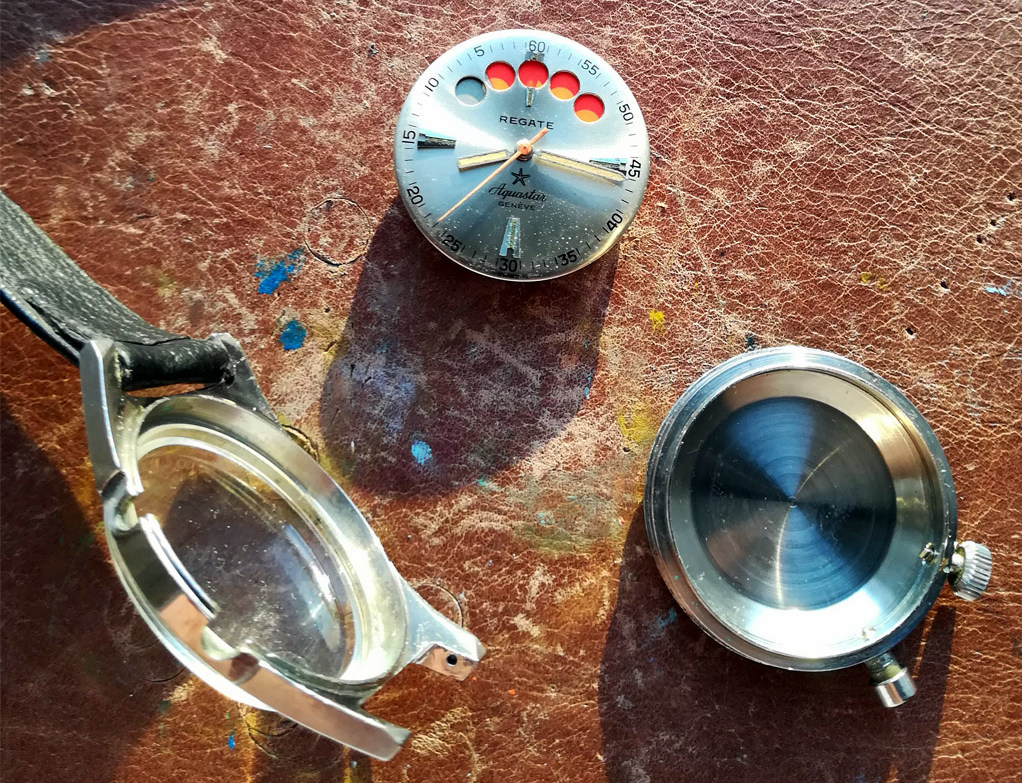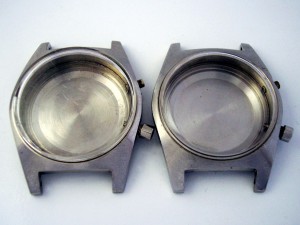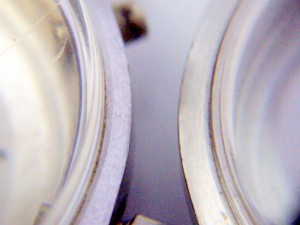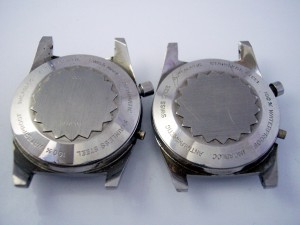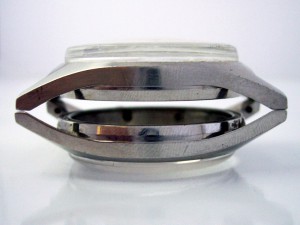In 1962 the Aquastar brand was founded by Frédéric Robert in Geneva, Switzerland, and initially introduced as a sub-brand of the Swiss watch company JeanRichard SA. The brand was not only born from the passion of one man for the sub-marine world but was also reflecting a period where, for the first time, the sub-marine world became of interest. Already in 1958 the JeanRichard company had applied for a patent for a wrist watch with a turnable bezel. This patent let shortly after to the model JeanRichard Aquastar 60. At first the Aquastar watches had both the names JeanRichard (or the JeanRichard logo) and Aquastar on the dial. But soon this was dropped, and it became just Aquastar. With this first experience the development of other water sports watches followed, which made Aquastar the most important manufacturer in this field.
With the Aquastar watches becomming very popular, the company name changes into Aquastar SA. Under the direction of the experienced diver Frédéric Robert (who later also worked for Omega where he developed some of the most important models in the Seamaster series in the 1960’s), famous Aquastar watches that are still used today saw the light, such as:
-
The Aquastar Atoll , a regular diving watch with a ‘normal’ rotating bezel.
-
The Aquastar Seatime, with an internal bi-directional bezel with diver scale controlled by the same crown that sets the time.
-
The Aquastar Benthos 500, with the case made of one single seamless piece of steel, the first diving watch water-resistant up to 500 m which put the diving watches really on the map!
-
And the Aquastar Regate, the first Regatta Yachttimer wrist watch with the 5-dot countdown.
Examples of an Aquastar Atoll, Aquastar Seatime and Aquastar Bentos 500.
Various Aquastar advertisements with the Regate model shown. Only in the last two ads the watch has the ful name Aquastar Regate on the dial.
In 1961 JeanRichard SA had filed for a patent for a regatta watch with a 5 minute countdown function. This patent represents the “Birth Certificate” of the regatta yachttimer watches as we still know them today. And somewhere in the mid 1960’s Frédéric Robert (mentioned as inventor in the patent) developed the Aquastar Regate from this patent with a modified Felsa 4000N movement: the first Regatta Yachttimer wrist watch on the market!
PIECE OF HOROLOGY ALLOWING THE COUNTING OF A RESTRICTED NUMBER OF MINUTES.
‘The enclosed design represents, as an example, a kind of execution of a piece of horology being the subject of the invention. The figure 1 represents the watch as it appears to the user. The hand of the second 1 is located in the centre of the movement and the dial includes an opening 2 through which appears the surface upper side of an indicating organ 3, including a coloured zone 3A indicating in the graduation of the dial opening the time elapsed since the re-setting to zero of the hand of the seconds obtained by pressing the pusher 4, the crown 5 being used to rewind and to set the time of the hour and the minutes hands’.
You can download the complete patent as PDF here.
First model Aquastar Regate with the Felsa 4000N movement.
Model: Aquastar Regate.
- Reference: Z 28 A or 143.600 or 0005?
- Caliber: Felsa 4000N movement with an Aquastar patented (1964) regatta module.
- Case size: Ø 37,4 mm / H 13,5 mm.
- Year: mid 1960’s.
How the countdown function works:
The manual wound Felsa 4000N movement with regatta modification, has the crown to set the time at 2 o’clock and one pusher at 4 o’clock for start/reset. Under the dial lays the indicator disk coloured silver (as the dial) with a red section for counting the minutes. There are five round holes cut out of the dial, between 10 and 2 o’clock.
After a reset the five dots colour red and the sweep second hand return to 60 (0). By releasing the pusher the countdown timer starts and the sweep hand is set in motion counting the seconds backwards from 60 to zero. After one minute the first dot changes to silver, another four minutes to go. After 5 minutes all dots are silver and the regatta starts. The indicator disk stops but the second hand will run as long as the movement is wounded enough.
Movement:
Specifications:
- Make: Felsa.
- Caliber: 4000N.
- Type: automatic flyback chronograph with yachttimer
function. - Size: 11,5″ Ø 26 mm / H 5,55 mm.
- Frequency: 18.000 A/h.
- Power reserve: 44 hours.
- Jewels: 17.
- Shock protection system: incabloc.
Equal to the Felsa caliber 4000, but modified with a revolving indicator disk.
A nice description of how the Felsa caliber 4000N with the coloured indicator disk works, is written by Richard Askham on his weblog, see here.
Variations:
Two different dials. First, the more common with ‘Regate’ under the 12 and ‘star’, ‘Aquastar’ and ‘Geneve’ above the 6. Second, the more rare one, with the ‘star’ under the 12 and ‘Aquastar’ and ‘Geneve’ above the 6. This version does not have the name Regate on the dial.
Two different rotors. Left engraved with the text ‘Aquastar – Watch Co – Seventeen 17 jewels Swiss unadjusted’ and right with just ‘Aquastar Geneve’. The last one is probably older.
For the first Regate Aquastar used the same case design as for several other models (Airstar, ’60, ’63, etc). The star-pattern on the caseback is unique to Aquastar, and the caliber number is always written on the caseback under the serial number. On the right one of the very first made:
With an original 19 mm NSA steel bracelet, signed Aquastar.
Co-branded Aquastar with Duward, Lorenz and Heuer.
Branded ‘Pirelli Regate’ on the dial, but ‘Aquastar Regate’ on the caseback.
You will find a variety of colours for the sweep second hand: from orange, red to more pink-like. Probably this is due to the combination of aging and sunlight.
Decorative brochure for the Aquastar Regate, reference number 675183. In the French version of this brochure however, the watch has the reference number 000.5.
It was again the English watchmaker Richard Askham who confirmed to me of at least three different cases for this first version Aquastar Regate that he is aware of! The obvious 1st generation case is the one with the smooth caseback. At first sight it looks like an ordinary snap caseback rather than a screw caseback. But the pictures show it is actually a two part/monobloc case with a split stem.
The outer case presses over the inner case to make a seal. As the Felsa 4000N movement is concerned, it has a different (early) engraved rotor. This two-part case measures just over 36 mm, and is a littlebit smaller than the screw-caseback versions.
The second and third version of the Regate case are very much alike, and you can only see the difference by compairing the two. These two versions are screw back cases, with the unique Aquastar star-pattern for which you need a special tool to open them (without damaging them that is).
The case on the left has a wider crystal and slimmer ‘shoulders’ on the case. The fourth comparison picture it shows that case is also thicker on the sides. Both cases should be the same size, 37 mm, but can somebody confirm that?
 Another advertisement, this one for the American market.
Another advertisement, this one for the American market.
This is the end of part 1. To be continued in the Aquastar 1975 – 1982 section.
Source:
- many thanks to John Nicol for your given info about the two-part case.
- many thanks to Christophe Gosteaux (www.atelier-horloger.fr) for your picture of the Aquastar brochure.
- many thanks to Richard Askham for all your given information and your support.
- http://www.aquastar.ch/
- http://www.onthedash.com/
- http://thewatchspotblog.com/
